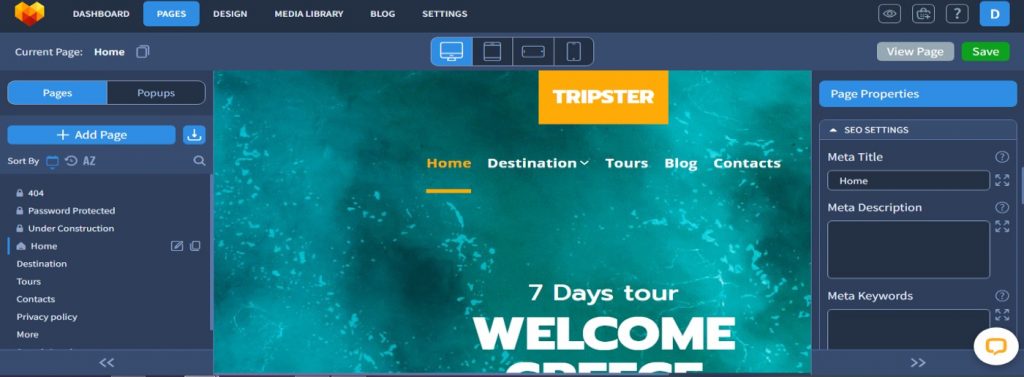Why Niche Marketplaces Are Rewriting the Rules of Template Design
There is something almost electric about the specificity of purpose. A bakery that only makes sourdough. A watchmaker who carves wood instead of forging steel. The magnetism of the niche is undeniable—especially when that specificity is paired with the power of eCommerce. As boutique marketplaces multiply, they’re attracting highly focused buyers and sellers, many of whom are exploring selling digital products as a side hustle.
Templates, once considered interchangeable skins for websites, are undergoing a tectonic shift. This transformation isn’t led by big-box eCommerce sites or generalized CMS themes. It’s being steered by small, agile platforms that understand nuance. A crafts supply marketplace, a board game trading hub, a site dedicated solely to second-hand camera lenses—all have their own unique rhythm. Their design requirements are not variations of a norm; they are completely separate blueprints. And in that divergence lies a creative revolution.
A Design Renaissance Born of Specific Needs
The success of a niche marketplace hinges on one thing: relevance. It’s not just about functionality or aesthetic—it’s about speaking a visual language that resonates with a distinct community. When a platform revolves around eco-friendly home goods, the user interface must intuitively echo sustainability. Similarly, app designers have found success by carving out niches in app design, catering to specific community needs.

This kind of hyper-focused utility demands a break from generic design molds. A mass-market template might accommodate a wide swath of industries, but it lacks the soul required to elevate a niche business. That’s where customizing templates for niche marketplaces becomes essential. They must understand the target audience so deeply that every button, every menu layout, and every font choice reflects their needs and desires. Context becomes king, and subtle cues become the foundation of interaction. It’s no longer enough for a design to look “clean” or “modern”—it has to belong to the world it’s entering.
Practical Tips for Designers
This elevated standard has reshaped how designers approach their craft. Templates are now expected to operate as silent collaborators, anticipating user behavior and reinforcing community values. It’s an emotional and strategic design challenge rolled into one. For those building or customizing templates for niche marketplaces, here are some practical yet powerful suggestions:
- Leverage storytelling modules: Design templates that include sections for founder bios, origin stories, or process showcases. This deepens the emotional connection with users.
- Use tailored iconography and imagery: Replace generic visuals with symbols and photos that reflect the specific industry or lifestyle the marketplace supports.
- Design around core user goals: Prioritize key user actions—like filtering by handmade materials, rating sellers, or accessing community tips—directly in the layout.
- Support flexible typography: Give users room to adjust fonts and sizes so they can better reflect their unique tone or branding voice.
- Include visual trust anchors: Integrate subtle but effective design cues like badges, reviews, or clean product framing to reinforce professionalism and care.
Micro-Brand Ecosystems Driving Innovation
Within every niche marketplace, a quiet but profound revolution is taking place. Sellers aren’t merely uploading their products—they’re building micro-brands. For instance, some have pivoted from freelancing to selling digital products, establishing unique identities in their niches. These are full-fledged identities that carry a unique tone, backstory, and set of values. And they need digital homes that can reflect that personality.
Templates, then, are no longer just containers. They become brand scaffolding. A handmade soap vendor may need embedded video blocks to show their process. A seller of vintage toys might prioritize a gallery-style layout reminiscent of a collector’s shelf. What we’re seeing is a demand for templates that can bend, stretch, and adapt—not just across industries, but within the subtleties of subcultures.
Customization as a Community Catalyst
Marketplace owners are taking note. The more support they offer for brand storytelling, the more vibrant and engaged their communities become. Customization is no longer a luxury feature; it’s a cornerstone of platform viability. This puts pressure on CMS providers and template designers to evolve fast—or risk becoming obsolete.
Some sellers are also demanding dynamic features that allow for storytelling through interactivity: animated product reveals, immersive “about” sections, layered visuals that respond to user behavior. These are no longer bonus points—they’re expectations. As micro-brands flourish, so too must the digital frameworks that host them.
Advanced SEO and the New Backbone of Visibility
In niche marketplaces, visibility can’t be left to chance. This underscores the importance of SEO in template design. Without the wide net of general search volume, every seller must fight for targeted reach. That makes built-in SEO scaffolding an absolute necessity, not a back-end afterthought.

Template design is now expected to include meta-structure support: schema integrations, lightning-fast load times, and optimized image handling. The importance of user experience in B2B eCommerce cannot be overstated in this context. These under-the-hood features directly impact discoverability, especially for micro-brands operating in competitive corners of the internet. The aesthetic must marry seamlessly with function, making SEO a design consideration, not just a technical one.
It’s not uncommon now for marketplace operators to request templates that surface keyword-rich content in intuitive ways—product descriptions that double as blog entries, FAQs baked into the design, or review modules designed to spark user-generated SEO. Templates need to accommodate these nuanced SEO strategies without overwhelming the user experience.
Even URL structures and breadcrumb navigation are being reconsidered through an SEO lens. A beautiful template that isn’t search-optimized is, in a niche environment, a silent liability. The bar has risen.
Onboarding That Feels Like Belonging
The moment a new seller enters a marketplace, their first steps must feel effortless, intuitive—and above all, welcoming. Implementing effective onboarding strategies for marketplaces is crucial in this regard. That’s where template design can make or break the experience. In niche ecosystems, onboarding isn’t just about function; it’s about fostering a sense of alignment.
Templates play a critical role in that emotional calculus. Dashboards must be clean, uncluttered, and purpose-built. Forms should guide rather than overwhelm. Tooltips and prompts should feel more like guidance than instruction. The onboarding process has to carry the tone of the community it serves, whether that’s collaborative, professional, whimsical, or minimalist.
UX as a First Impression
This attention to onboarding flow has led many platforms to demand UX patterns typically seen in premium SaaS products—step-by-step progress indicators, personalized dashboards, content wizards. These features once reserved for enterprise platforms are now expected at every level. And subtly, this shift changes the expectations sellers bring with them when selling on online marketplaces.
Templates aren’t just entry points anymore—they’re onboarding experiences in their own right. A great one anticipates hesitation, reduces friction, and gently ushers users into confidence.
The Trust Triggers That Power Conversions
When buyers are making decisions in highly specialized spaces, trust is the real currency. And that trust begins with design. Templates now have to carry subtle, coded reassurances in their architecture: clean layouts, smart use of white space, social proof integrations, and credibility markers like SSL icons or payment security badges to enhance user trust through design elements.
Trust Built Through Micro-Detail
Trust is not a one-size-fits-all mechanism. A buyer shopping for holistic pet remedies is looking for very different assurances than someone browsing rare car parts. Templates for niche marketplaces must reflect those sensitivities. Perhaps it’s through a testimonial carousel, or a design that elevates certification icons, or the presence of an embedded chat widget offering human connection.
Microcopy—those tiny pieces of instructional or clarifying text—has become a trust trigger all its own. The tone must match the user’s emotional state. Formal where professionalism is key, quirky and light-hearted where community vibes matter. These aren’t design afterthoughts; they’re core conversion tools.
The placement of these elements matters just as much. A strategically located guarantee snippet can turn hesitation into purchase. Trust is built in milliseconds—and templates are now being engineered to deliver that impact precisely.
A Future Built on Specialization, Not Scale
There is an intimacy to niche marketplaces that scale simply can’t replicate. And that intimacy is demanding a reimagining of design principles we once thought were set in stone. Templates, far from being static or interchangeable, are becoming dynamic artifacts that evolve with the micro-communities they serve.
This movement isn’t slowing down. As more entrepreneurs and creators find homes in these specialized platforms, they will continue to push for tools that match their uniqueness. Template design will need to evolve—not just in aesthetics, but in ethos. Designers must think like community builders, like storytellers, like behaviorists.
MotoCMS and platforms like it sit at the crossroads of this transformation. The challenge isn’t to catch up—it’s to lead. To see each new marketplace as a creative brief waiting to be answered. To treat each niche not as a constraint, but as a catalyst for innovation. The rules are being rewritten. And the best templates will be those bold enough to play by none at all.




Leave a Reply